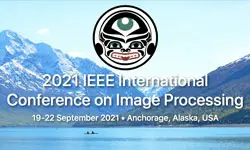3D Autoencoders For Feature Extraction In X-Ray Tomography
Aniket Tekawade, Zhengchun Liu, Peter Kenesei, Tekin Bicer, Francesco De Carlo, Rajkumar Kettimuthu, Ian Foster
-
Members: FreeSPS
IEEE Members: $11.00
Non-members: $15.00Length: 00:10:28
20 Sep 2021
Real-time steering of time-resolved or in-situ X-ray tomography requires capturing changes in morphological descriptors in a sample (e.g., porosity, particle size, and crack width) during continuous data acquisition. Image segmentation (2D or 3D) followed by quantitative measurement is the conventional method for tracking changes in these descriptors with respect to a previous time-step or a 3D search in a volume. However, image segmentation is expensive. As a faster and unsupervised alternative, we propose a feature-extraction approach using a convolutional autoencoder, where the latent space of the encoder responds to relative changes in morphology without prior knowledge of the morphological descriptors. To test this approach in parametric experiments, we used a digital twin for micro-CT to generate realistic datasets of porous materials. We show that for some configurations of the autoencoder, its n-dimensional latent space encodes the sample's local porosity metrics while disregarding contrast information (relative proportion of absorption and phase contrast) determined by the imaging modality and not the sample. Through dimensionality reduction, the vector??s response is visualized in 2D space to find clusters of data with similar porosity metrics. Our approach can extract features from grayscale tomographic data more than 4x faster than a segmentation + pore analysis workflow.



